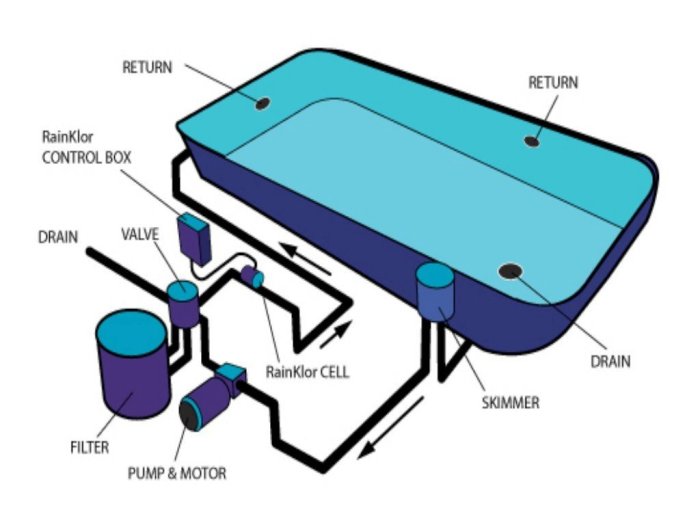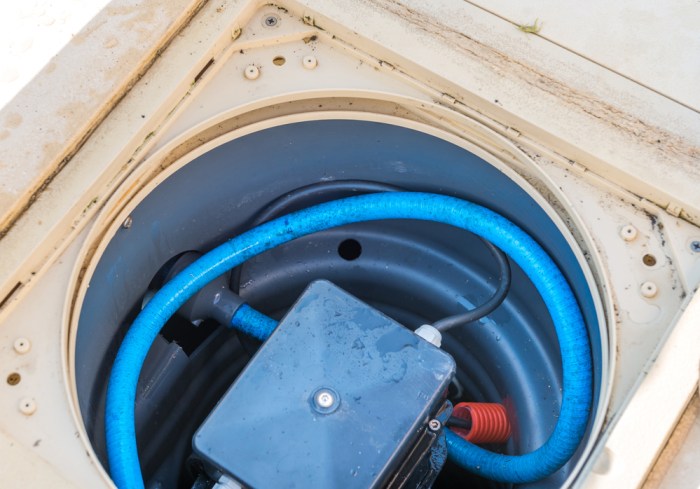As pool recirculating equipment and pumps are required to be grounded, understanding the electrical code requirements and proper grounding techniques is crucial for ensuring safety and protecting your equipment. This comprehensive guide delves into the significance of grounding, grounding methods, and the types of pool recirculating equipment, empowering you with the knowledge to maintain a safe and efficient pool system.
Proper grounding provides a path for electrical current to flow safely into the earth, preventing dangerous electrical shocks and equipment damage. This guide will provide detailed instructions on selecting the appropriate pool pump, installing and maintaining your equipment, and troubleshooting common problems, ensuring your pool remains a safe and enjoyable oasis.
Pool Recirculating Equipment and Pumps

Pool recirculating equipment and pumps are essential components of any swimming pool system. They ensure that the water in the pool is clean, clear, and free of contaminants. Proper grounding of this equipment is crucial for safety and equipment protection.
Grounding Requirements
Electrical codes require that pool recirculating equipment and pumps be properly grounded to prevent electrical shock and equipment damage. Grounding provides a path for excess electrical current to flow safely into the ground, rather than through the equipment or water.
Grounding can be achieved using various methods, including copper grounding rods, ground wires, and grounding clamps. It is important to follow the manufacturer’s instructions and local electrical codes when grounding pool equipment.
Types of Pool Recirculating Equipment
- Pumps:Circulate water through the pool system.
- Filters:Remove dirt and debris from the water.
- Heaters:Maintain the desired water temperature.
Pump Selection and Sizing
When selecting a pool pump, consider factors such as pool size, turnover rate, and head pressure. The required pump size can be calculated using the following formula:
Flow Rate (GPM) = Pool Volume (gallons) / Turnover Rate (hours)
Different types of pool pumps include single-speed, two-speed, and variable-speed pumps, each with its own advantages and disadvantages.
Installation and Maintenance, Pool recirculating equipment and pumps are required to be grounded
Proper installation of pool recirculating equipment is essential for safe and efficient operation. Follow the manufacturer’s instructions carefully.
Regular maintenance is crucial to extend equipment life and ensure optimal performance. This includes cleaning, lubrication, and periodic inspections.
Troubleshooting Common Problems
- Pump not running:Check power supply, fuses, and circuit breakers.
- Water not circulating:Check pump impeller, filter, and skimmer basket.
- Leaking pump:Replace seals or gaskets.
Energy Efficiency
Energy-efficient pool recirculating equipment can reduce operating costs and environmental impact. Features to consider include variable-speed pumps, energy-saving filters, and solar heaters.
FAQ Section: Pool Recirculating Equipment And Pumps Are Required To Be Grounded
Why is grounding pool recirculating equipment and pumps important?
Grounding provides a safe path for electrical current to flow, preventing electrical shocks and equipment damage.
What are the different types of grounding methods?
Common grounding methods include using ground rods, grounding plates, or connecting to the electrical panel’s grounding system.
How often should I inspect and maintain my pool recirculating equipment?
Regular inspections and maintenance, including cleaning, lubrication, and inspections, are essential to ensure proper operation and longevity.

